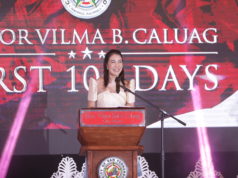ON FEBRUARY 21, 1853, Felix Resurreccion Hidalgo, one of the greatest Filipino painters along with fellow painter Juan Luna in the 19th century, was born in Binondo, Manila.
Hidalgo played a significant role in Philippine history for having been an acquaintance and inspiration for members of the Philippine reform movement which included Dr. Jose Rizal, Marcelo del Pilar, Mariano Ponce and Graciano López Jaena.
He studied Fine Arts and was subsequently sent to Spain in 1879 as a “pensionado” and enrolled in the School of Fine Arts in Madrid.
Instead of returning to the country after his studies, Hidalgo went to Paris and put up a gallery, which became one of the centers of Filipino activities, where Filipino exiles and revolutionaries found a sanctuary.
One of the highlights of his career was his winning the silver medal in the 1884 Madrid Exposition of Fine Arts, along with the gold win of painter Juan Luna, whom members of the Philippine reform movement celebrated, with Rizal toasting to the two painters’ good health and citing their awards as evidence that Filipinos and Spaniards were equals.
The canvases he executed for the Spanish colonial government in return for his study grant include: Governor Luis Perez Dasmarinas and his Dominican Advisor, Guerreros Filipinos Velando la Tumba de su Jefe (Filipino Warriors Guarding the Tomb of their Chief), 1890, and The Defeat of Limahong, 1892.
His Greek Philosopher at Work, 1889, La Enferma (The Invalid), 1900, and Per Pacem et Libertatem (Through Peace and Liberty), 1904, all life-sized pieces, used to hang in the National Museum which was then called National Gallery of Art in Manila.
His major and controversial mural is the Assassination of Governor Fernando Manuel de Bustamente, which shows friars murdering the governor.
He died on March 13, 1913 at the age of 60 in Sarrea, Spain.




